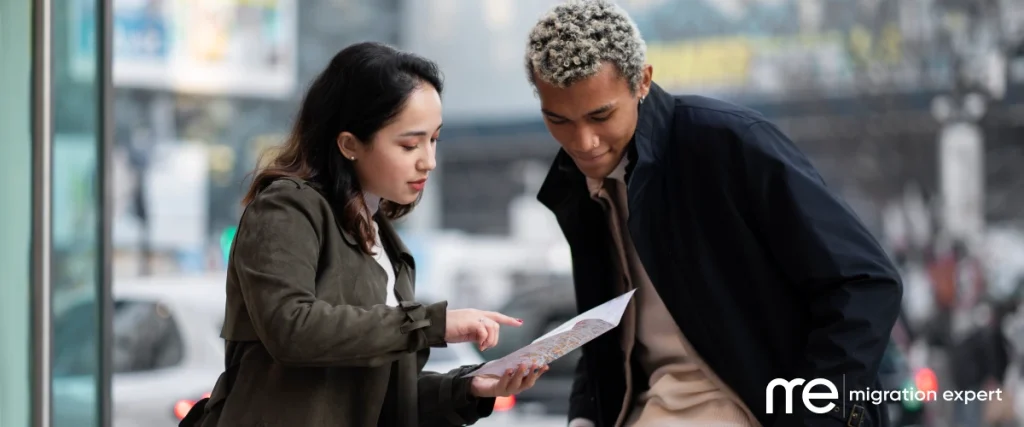Navigating the Australian immigration system can be a daunting task, especially when it comes to reuniting with your partner. The Australian Partner Visa programme offers various visa options for spouses, de facto partners, and fiancés of Australian citizens, permanent residents, and eligible New Zealand citizens. This comprehensive guide will walk you through the different types of Australian Partner Visas, helping you understand the eligibility criteria, application processes, and benefits of each option.
What is an Australian Partner Visa?
An Australian Partner Visa allows the spouse or partner of an Australian citizen, permanent resident, or eligible New Zealand citizen to live in Australia. The visa is designed to keep families together, providing a pathway to permanent residency for eligible applicants. Depending on the nature of your relationship and whether you are applying onshore or offshore, there are several types of Partner Visas to consider.
Types of Australian Partner Visas
1. Partner Visa (Temporary and Permanent) (Subclasses 820/801)
The Partner Visa (Subclasses 820/801) is designed for applicants who are already in Australia and wish to live with their partner or spouse permanently. It involves a two-stage process:
- Subclass 820 (Temporary Visa): This is the initial visa granted to applicants who meet the eligibility criteria. It allows the applicant to live in Australia while their permanent visa application is processed.
- Subclass 801 (Permanent Visa): After approximately two years on the Subclass 820 Visa, applicants can be assessed for the Subclass 801 Visa, which grants permanent residency.
Eligibility Criteria:
- The applicant must be in a genuine and continuing relationship with an Australian citizen, permanent resident, or eligible New Zealand citizen.
- The applicant and their partner must either be married or in a de facto relationship (living together for at least 12 months).
- Applicants must meet health and character requirements.
Key Benefits:
- Allows applicants to live, work, and study in Australia.
- Access to Medicare, Australia’s public healthcare system.
- Pathway to permanent residency and eventually Australian citizenship.
2. Partner Visa (Provisional and Migrant) (Subclasses 309/100)
The Partner Visa (Subclasses 309/100) is for those applying from outside Australia. Similar to the Subclasses 820/801 visas, this option also involves a two-stage process:
- Subclass 309 (Provisional Visa): This temporary visa allows the applicant to enter and stay in Australia while the permanent visa is processed.
- Subclass 100 (Migrant Visa): After living in Australia for about two years on the Subclass 309 Visa, applicants can apply for permanent residency through the Subclass 100 Visa.
Eligibility Criteria:
- The applicant must be outside Australia when applying for the Subclass 309 Visa.
- The relationship with the Australian partner must be genuine and ongoing.
- Marriage or de facto relationship requirements are similar to the onshore partner visa.
Key Benefits:
- Allows the partner to join their loved one in Australia.
- Provides a pathway to permanent residency after holding the provisional visa for two years.
- Enables applicants to live, work, and study in Australia and access Medicare.
3. Prospective Marriage Visa (Subclass 300)
The Prospective Marriage Visa (Subclass 300), also known as the Fiancé Visa, is for individuals who are outside Australia and engaged to an Australian citizen, permanent resident, or eligible New Zealand citizen. This visa allows the applicant to enter Australia, marry their partner, and then apply for a Partner Visa.
Eligibility Criteria:
- The applicant must be outside Australia at the time of application and visa grant.
- The applicant and their partner must be genuinely intending to marry within nine months of the visa being granted.
- Both the applicant and their fiancé must be at least 18 years old.
- Applicants must meet health and character requirements.
Key Benefits:
- Grants the right to travel to Australia and marry within nine months.
- After marriage, holders can apply for the Partner Visa (Subclasses 820/801) while in Australia.
- Allows holders to work and study in Australia during the visa period.
4. Longer-Term Relationship Visas
For applicants who have been in a longer-term relationship with their Australian partner, there may be opportunities to bypass the temporary visa stage and proceed directly to permanent residency. This is often the case if:
- The couple has been in a de facto relationship for at least three years.
- The couple has been in a de facto relationship for two years and has a dependent child together.
Applicants in this situation should apply for the Partner Visa (Subclasses 820/801 or 309/100) but may be eligible to be granted the permanent visa directly without the initial temporary visa stage.
Key Considerations When Choosing a Partner Visa
1. Onshore vs. Offshore Application
Decide whether you will apply while in Australia or from overseas. This choice will determine whether you apply for the Subclass 820/801 or Subclass 309/100. Onshore applicants can stay in Australia on a Bridging Visa while their application is processed, while offshore applicants must remain outside Australia until their provisional visa is granted.
2. Nature of Your Relationship
Whether you are married, in a de facto relationship, or engaged will influence the type of visa you apply for. Married or de facto partners typically apply for Partner Visas, while engaged couples should consider the Prospective Marriage Visa.
3. Processing Times and Costs
Partner Visa applications can take anywhere from several months to a few years to process, depending on individual circumstances and the type of visa. It’s important to plan accordingly and be prepared for the associated costs, which can be significant.
4. Health and Character Requirements
All Partner Visa applicants must undergo health examinations and provide police certificates to demonstrate good character. Failing to meet these requirements can result in a visa refusal, so it’s important to ensure you and your partner are eligible before applying.
Considering a move to Australia or need assistance with your visa application? Book your consultation with our experienced Registered Migration Agents. Let us help you navigate the complexities of the Migration Program and take your first step towards a promising future in Australia.
Conclusion
Understanding the different types of Australian Partner Visas is crucial for choosing the right pathway to join your loved one in Australia. Whether you are married, in a de facto relationship, or engaged, there is a visa option tailored to your circumstances. Carefully consider the eligibility requirements, application processes, and benefits of each visa type before making your decision. For personalised advice and assistance with your application, consult with a registered migration agent to ensure a smooth and successful visa process.
Making It Easy to Get Your Partner Visa
Discover Your Eligibility with Our Free Partner Visa Assessment
- Registered Migration Agents
- Comprehensive, Expert Advice
- Fast, Reliable Process
- Reuniting Families Since 2002
Remember:
This post is for general informational purposes only and is not a substitute for professional immigration advice. Given the uniqueness of every case, engaging with a registered migration agent is highly recommended for bespoke guidance and to navigate the specific details of your situation effectively. Book a visa consultation with a Registered Migration Agent
Subscribe to our newsletter
Sign up to our weekly newsletter to get the latest news about all things visas & immigration.













